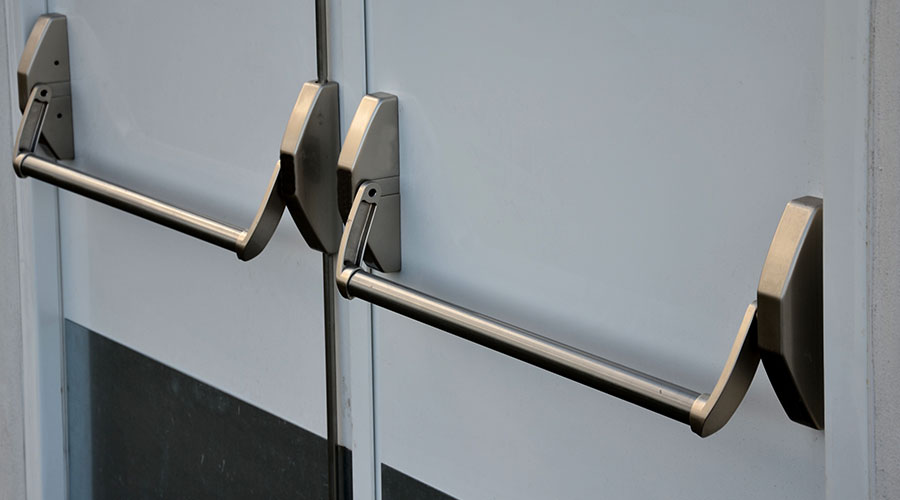The Role of Doors in Emergency Preparedness

Door manufacturers discuss features that are a help in emergency scenarios.
When an emergency strikes a healthcare facility, occupants can be sent into a panic quickly. They may even scramble for the doors, trying to get out or in. If the doors do not work properly, it can spell chaos for the facility. Fortunately, there are features that have been integrated into doors to assist in emergencies. In this manufacturer roundtable, Healthcare Facilities Today speaks with door manufacturers about what features of doors help with emergency preparedness.
What features of doors can assist with a healthcare facility’s emergency preparedness?
“Automatic door systems can be designed to disengage in the event of an emergency allowing free access through all the doors. Panic bars that engage doors quickly can be integrated into the door hardware design and specifications and integrate with power-operated door controls.”
— Kevin Mayer, commercial director for PurOptima
“In emergencies, such as fires or evacuations, automatic doors facilitate swift and controlled egress. These systems can be programmed to open automatically during emergency situations, ensuring the safety of patients and staff.
With automatic door systems throughout the facility, critical emergency prevention features can be added to secure these buildings tightly.
Some key features include:
- bullet-resistant glass (doors and windows),
- key card entry systems,
- anti-piggy backing,
- anti-tailgating,
- automatic locking
- fire doors, and
- breakaway doors.”
— Tysen Gannon, business development and marketing consultant, AD Systems
“Many kinds of automatic doors have special features or modes that are specific to emergency conditions, such as emergency egress. An example of this would be the egress breakout commonly found on exterior automatic sliding doors that are meant for the fast and efficient exit of occupants from a facility. These doors will have mechanisms that allow the moving panels to be pushed to swing outward enabling a large clear door opening to allow fast egress for a large group of individuals.
Panic bars, also known as exit devices or push bars, are mounted on the inside of doors and allow building occupants to quickly exit in emergency situations. When engaged, panic bars unlatch the door, allowing for egress without the need for unlocking.
Fire-rated doors are designed and built to resist the spread of fire and smoke for specified durations. These doors help contain the spread of fire and smoke, allowing more time for evacuation while also reducing property damage.
Electromagnetic locks provide secure locking of doors during normal operations. Emergency release mechanisms, such as manual switches or power cut-off devices, allow electromagnetic locks to be deactivated instantly, allowing prompt evacuation when needed.”
— Brian Ha, product manager, STANLEY Access Technologies
Jeff Wardon, Jr. is the assistant editor for the facilities market.
The post "The Role of Doors in Emergency Preparedness" appeared first on Healthcare Facilities Today

